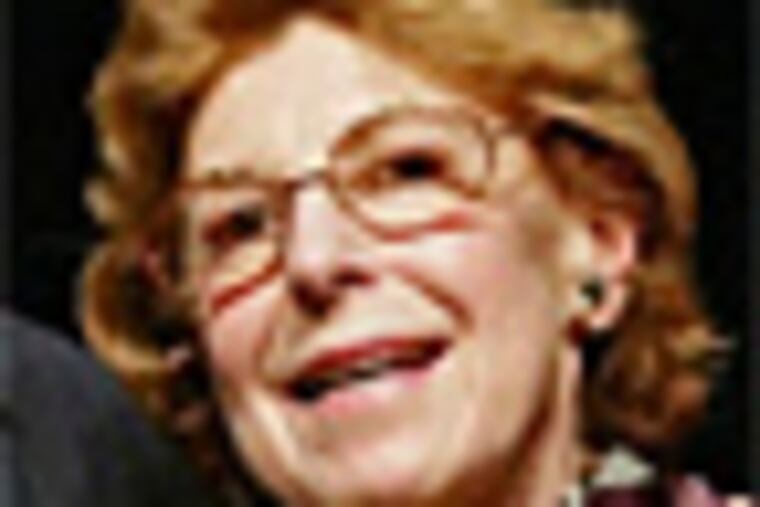Artist Helen Frankenthaler
Helen Frankenthaler, 83, a key figure in postwar American abstract art, died Tuesday at her home in Darien, Conn., after a long illness.

Helen Frankenthaler, 83, a key figure in postwar American abstract art, died Tuesday at her home in Darien, Conn., after a long illness.
She was known for creating lyrical abstract works using thin washes of translucent colored paint that soaked into her unprimed canvases, achieving qualities similar to watercolor, though often on a grand scale.
If the technique, which derived from Jackson Pollock's drip paintings, forsook absolute control, it made up for it in liveliness, as Ms. Frankenthaler made use of her great feeling for contrasts in color, opacity, and shape.
Ms. Frankenthaler had a four-year relationship with the influential art critic Clement Greenberg in the early 1950s. She later married the abstract expressionist painter Robert Motherwell; they divorced in 1971. Her nephew, photographer and artist Clifford Ross, said Tuesday that she "lived passionately and intensely. The lyricism that was part of her painting was also part of who she was."
Casting off the rhetoric of self-expression and masculine vigor associated with such artists as Pollock and Willem de Kooning, Ms. Frankenthaler's method opened up abstract expressionism to new, more subtle realms of feeling. It revealed a more pliant relationship to nature, which was an inspiration throughout her career.
She was also an innovative printmaker; her woodcuts, in particular, brought a new level of ambition to the medium, most notably in scale (many were very large) and color, which, in a medium not known for nuance, could attain high levels of delicacy.
Rusty Powell, director of Washington's National Gallery, helped Ms. Frankenthaler prepare several exhibitions of her work. He said she was "extremely smart, and she had an amazing eye. . . . She's often portrayed as a lyrical abstractionist, but you never forgot that this was one tough-minded woman."
Ms. Frankenthaler was born into a well-to-do Manhattan family. In 1950, she met Greenberg at Bennington College. He was 41, she was 21.
Two years later, she produced her breakthrough painting, Mountains and Sea, made by pouring washes of colored paint, diluted by turpentine, onto unprimed canvas. It reveals the influence of Hans Hofmann, with whom Greenberg had encouraged her to study. The most influential critic of his day, Greenberg championed abstract expressionism and what later came to be known as color field painting, which emphasized surface flatness, eschewing illusions of depth in order to unite the paint more emphatically with its support.
Ms. Frankenthaler, who pioneered the practice of staining her canvases, was thus an important bridging figure between the abstract expressionists and color field artists. Yet the mostly male painters who made up Greenberg's circle, Ross said, "didn't quite know what to do with her. She was a leader, but, by virtue of her gender, an exiled leader almost from the start."